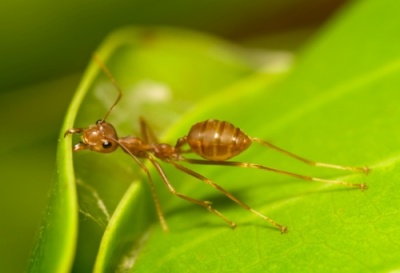Fire Ant Allergy
 Fire ants are a stinging insect typically found in the South/Southeast areas of the United States – from Florida to Texas, and in some parts of the Southwest. They have been found as far west as California, and as far north as Virginia.
Fire ants are a stinging insect typically found in the South/Southeast areas of the United States – from Florida to Texas, and in some parts of the Southwest. They have been found as far west as California, and as far north as Virginia.
Symptoms of a Serious Reaction
For people with fire ant allergy, stings may cause a life-threatening reaction called anaphylaxis (an-a-fi-LAK-sis). Symptoms of anaphylaxis typically involve more than one part of the body and may include itching and hives, swelling in the throat or tongue, difficulty breathing, dizziness, stomach cramps, nausea or diarrhea. In extreme cases, a rapid fall in blood pressure may result in shock and loss of consciousness. Symptoms of anaphylaxis require emergency medical treatment.
Given the severity of a potential reaction, an accurate diagnosis for fire ant allergy is key to being prepared for an emergency. An allergist / immunologist has specialized training and skills to test for stinging insect allergy and develop a plan to manage allergies.
Identifying Fire Ants
Fire ants build nests of dirt in the ground, often on the edges of sidewalks or roads. In moist, clay-type soil, the mounds can be quite tall, up to 18 inches. In dry, sandy soil the mounds may be entirely flat. Since fire ants do not remove vegetation from the area around their mounds, they may be very hard to see.
Fire ants bite with their jaws while they sting. This allows them to pull the stinger out, rotate and sting again. A single ant can inflict several stings in a matter of moments.
The venom in a fire ant sting will kill bacteria and some of your skin cells. This results in the formation of a blister that fills with a cloudy white material in about 24 hours. While this looks like a pus-filled lesion that should be drained, it is really sterile, and will heal quickest if left alone.
Preventing a Sting
First, stay away. Fire ants, like other insects, are most likely to sting if their homes are disturbed.
Unfortunately, since some mounds are flat, they may be stepped on accidently. This can result in hundreds of ants swarming out, coming to the defense of the mound.
Removing mounds requires killing the queen ant. Commercial products are available but take several weeks to make the mounds disappear.
If you find or accidently disturb a mound, move away quickly. The longer you stay near a mound, the more stings you may get.
Wear closed-toe shoes and socks outdoors; avoid going barefoot outside. When working in the garden or yard, wear work gloves. Shoes and gloves allow you to get away from the mound and to remove the shoes, socks and gloves with the attached stinging fire ants before they can reach your skin.
Taking Action
If you have a severe allergy, carry an autoinjectable epinephrine device. Learn how to administer the epinephrine, and replace the device before the labeled expiration date.
Epinephrine is a rescue medication only, and you must still go to an emergency room immediately if you are stung.
If you have had a serious adverse reaction to a fire ant sting you should be evaluated by an allergist / immunologist. With proper testing, your allergist can diagnose your condition and determine the best form of treatment.
Allergy shots (immunotherapy) may be effective long-term treatment for stinging insect allergy. Your allergist will give you shots containing small doses of your allergen, allowing your body to build a natural immunity to the trigger.
Find out more about stinging insect allergies.
Reviewed: 9/28/20